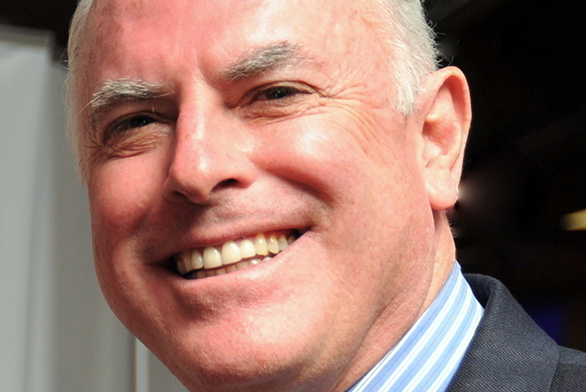Investing in the Future
June 29, 2017 | By Anne Kniggendorf (SF97)

Paul Martin (SF80) is the managing partner and chief investment officer of Martin Capital Advisors in San Antonio, Texas. And he likes to play games.
He says that investing is appealing to him because, like many Johnnies, he enjoys a good challenge.
“It’s a game where you’re measured constantly on how well you’re doing or how poorly you’re doing, and I liked that,” Martin says. “It’s exciting.”
Martin started the investment management firm in New York City in 1989, and moved it to Texas in 1990.
Before he graduated from St. John’s, he knew he wanted to go into the world of investment, but all the same, his career path has had its curves and switchbacks—and so did his education.
Though Martin learned about St. John’s as a high school senior in Portsmouth, New Hampshire, he didn’t apply. Instead, he spent two years at the University of Texas at Austin where he was enrolled in an honors liberal arts program called “Plan Two.” Many classes used original texts and a seminar-style classroom approach.
But this was 1973 and his draft number was low. He spent the next three years in the Army.
“My last year in the Army, I knew I wanted to go back to college, and thought I’d go ahead and apply to St. John’s,” he says.
After four semesters on each campus, he graduated from Santa Fe, just after meeting with a Navy recruiter who had stopped by Peterson Center. In the event that he should become a writer, he reasoned, a little time at sea would be useful, so he became a surface warfare officer.
But the call of “the game” was louder than the call of the sea, and after four years he took his curiosity to New York City to try his hand at investing.
With no experience in finance, he sent out about 100 resumes to brokerage firms in Manhattan.
“They don’t really have a requirement in terms of what your college degree is,” he says. “They’re looking for sales people.”
He eventually worked for Merrill-Lynch and Oppenheimer before striking out on his own. What he discovered is that the St. John’s education is a great asset to an investor.
“It’s all about critical thinking,” he says. “It’s all about looking at a variety of perspectives, then trying to figure out what’s the best route.”
Charlie Monger, Warren Buffet’s business partner, is a loud proponent of liberal arts education. Martin says Monger’s “argument is that a liberal education is the best education for critical thinking and being able to look at a whole variety of considerations in any investment that you’re looking at and trying to analyze it effectively.”
Martin keeps a book on this topic in his office called “Investing: the Last Liberal Art,” by Robert G. Hagstrom. Not only does the book tout a liberal education as necessary for success in the world of finance and investment, but it includes the St. John’s reading list and quotations from several alumni-investors: Steve Bohlin (SF81), Don Bell (SF92), and Lee Munson (SF97).
The book is in no way a “how-to,” but it is a thoughtful overview of the ways in which learners with a deep and broad liberal arts education like the one offered at St. John’s are better able to interpret disparate data in the marketplace or in any field.
Martin has advice for someone who would like to begin investing but doesn’t know where to start.
“A small amount of money can be put into an index fund, such as the Vanguard Total Market Index,” he says. “With dollar cost averaging over time it could grow into an amount large enough to be invested in individual securities.”
As far as careers go, Martin says investing isn’t different from any other in that it’s about talking to people already in the business and making connections.
“I think it’s really a matter of deciding what you want to do and just doing it, making it happen,” he says.

